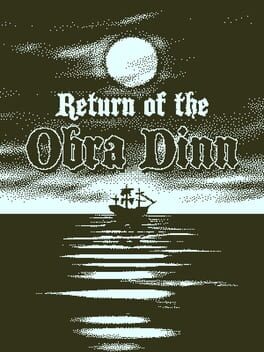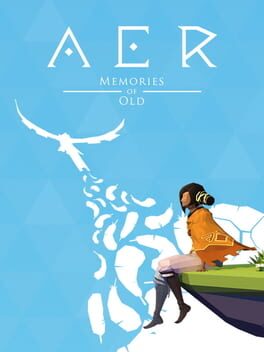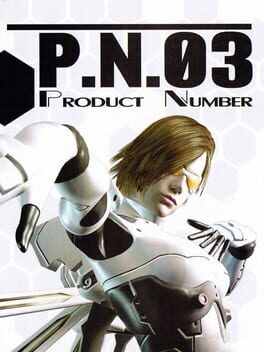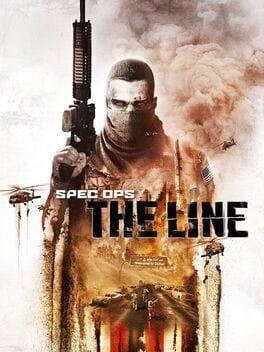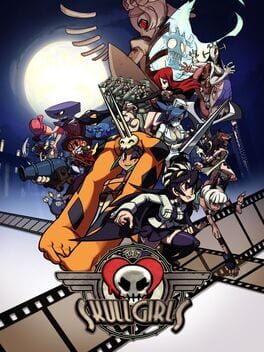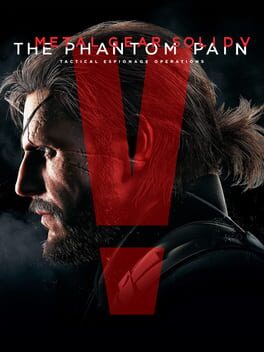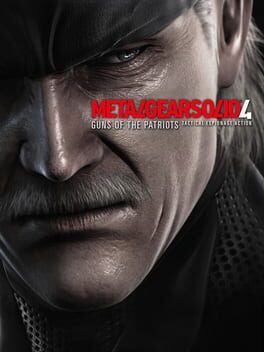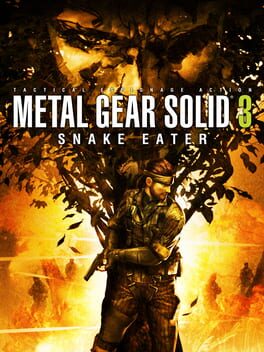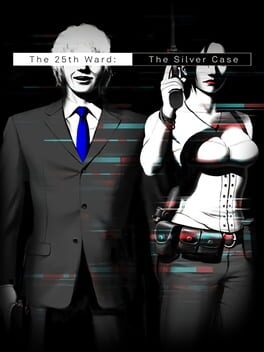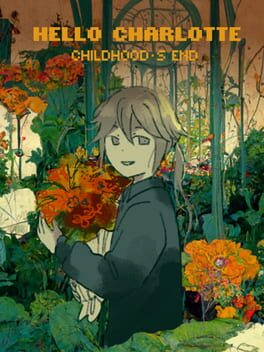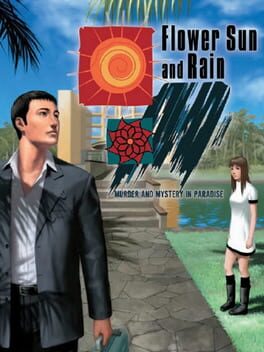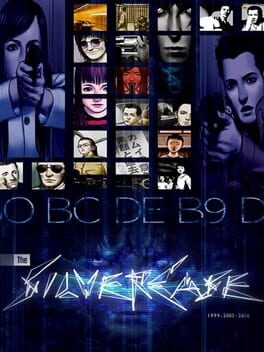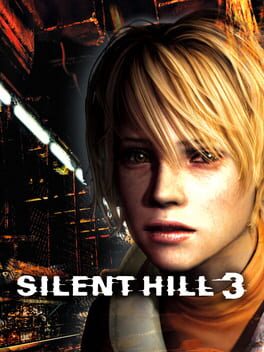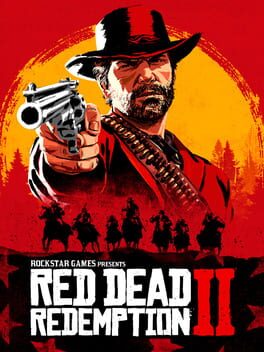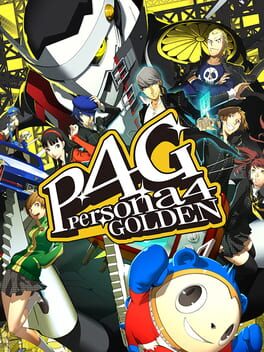Snakebutnotsolid
22 reviews liked by Snakebutnotsolid
I feel like I played this game at an incredibly fortunate time in my life. Struggling to commit to any game for more than a few hours I was burned out on most modern game genres such as shooters, platformers and RPGs. When I first saw this recommended to me on steam during a sale I was intrigued by the art-style and main gameplay mechanic. I didn't have particularly high hopes I just knew it was highly rated and had a unique aesthetic. If you had told me I was going to play through the game in one long 8 hour session whilst losing track of the time I'd have been shocked. This game is good. REALLY good.
Mechanically the game is fairly simple. You walk up to a corpse, use your stopwatch on it and you get several pieces of information. It starts with fully voiced dialogue of the moments leading up to the death. Then once that finishes you get the big picture, the actual moment of death in frozen tableau. One of the most impressive things about this game for me is the way it sets your expectations for what the game will throw at you and then continually makes you re-assess what in the actual fuck is happening.
Once having viewed the scene you are asked to fill in notebook and describe who died and what killed them, and later what happened to the passengers who went missing off screen. Did they die? Did they escape? You don't have the answer spelled out for you and have to make a lot of educated inferences to finish the game. While some games are easy and use puzzles to make you "feel" smart, this game feels both challenging and rewarding. I never got stuck and had to use a guide. Meticulous checking off of names and revisiting scenes with newfound context is the name of the game here. Really great stuff.
This game and Outer Wilds are two games that completely changed how I viewed what games could be. I can easily say I have never played anything quite like it. A must play.
Mechanically the game is fairly simple. You walk up to a corpse, use your stopwatch on it and you get several pieces of information. It starts with fully voiced dialogue of the moments leading up to the death. Then once that finishes you get the big picture, the actual moment of death in frozen tableau. One of the most impressive things about this game for me is the way it sets your expectations for what the game will throw at you and then continually makes you re-assess what in the actual fuck is happening.
Once having viewed the scene you are asked to fill in notebook and describe who died and what killed them, and later what happened to the passengers who went missing off screen. Did they die? Did they escape? You don't have the answer spelled out for you and have to make a lot of educated inferences to finish the game. While some games are easy and use puzzles to make you "feel" smart, this game feels both challenging and rewarding. I never got stuck and had to use a guide. Meticulous checking off of names and revisiting scenes with newfound context is the name of the game here. Really great stuff.
This game and Outer Wilds are two games that completely changed how I viewed what games could be. I can easily say I have never played anything quite like it. A must play.
Kirby and the Forgotten Land takes the franchise in a new direction. It's clear that Nintendo intended to follow the path of Super Mario Odyssey and create a unique 3D platformer.
When the game was revealed, I finally became interested in a Kirby game. I had played a few in the past, but they were always forgettable. Forgotten Land presented a new opportunity for me to connect with this iconic franchise.
Upon the game's reveal, I noticed some mechanics reminiscent of Mario Odyssey. They even adapted the classic Kirby power to possess enemies and now allow you to transform objects like cars. Although this mechanic is more fitting for Kirby, it reminded me of Mario Odyssey's Cap power.
The best part is seeing Kirby embark on a decent 3D adventure for the first time. It makes this game enjoyable for everyone, not just old fans and kids.
The game is everything it wanted to be, but to be honest, something was missing. I had a great time playing it, but it didn't live up to the level of fun I was expecting.
Even with that said, I can confidently say it's the best Kirby game I've ever played. It's a fantastic game, especially for kids and old fans.
When the game was revealed, I finally became interested in a Kirby game. I had played a few in the past, but they were always forgettable. Forgotten Land presented a new opportunity for me to connect with this iconic franchise.
Upon the game's reveal, I noticed some mechanics reminiscent of Mario Odyssey. They even adapted the classic Kirby power to possess enemies and now allow you to transform objects like cars. Although this mechanic is more fitting for Kirby, it reminded me of Mario Odyssey's Cap power.
The best part is seeing Kirby embark on a decent 3D adventure for the first time. It makes this game enjoyable for everyone, not just old fans and kids.
The game is everything it wanted to be, but to be honest, something was missing. I had a great time playing it, but it didn't live up to the level of fun I was expecting.
Even with that said, I can confidently say it's the best Kirby game I've ever played. It's a fantastic game, especially for kids and old fans.
Unlike the earlier big Nintendo release of Legends Arceus this year (which left me somewhat disappointed), I could tell Kirby and the Forgotten Land has the sauce. 10 minutes in, Kirby was back, and still had all the charm of the old games while taking a grand step forward.
Kirby translating from the 2D/2.5D platformer to a straight 3D platformer seems almost effortless. It's still Kirby at its core; you go around sucking up things to gain copy abilities to become this super powered puff ball of destruction. To add on to this, in this strange forgotten land riddled with the vestiges of widespread commercialism and consumerism, Kirby can interact with foreign artifacts such as cars and traffic cones to essentially embody their structure in what is called "Mouthful Mode," and use these artifacts as analogous to vehicles in other 3D platformers. It's a really nice way of breaking up the pace of the standard gameplay to introduce some quirky and silly mechanisms inbetween. And of course, as par for the course, there are also a lot of collectibles you'll want to snag, namely your captured buddies the Waddle Dees, as they'll expand your home base and give you more things to mess around with. Some of those improvements are great (a fishing minigame? Sign me up no questions asked) but other improvements are more questionable (a golden statue for all the Waddle Dees? Really?). Most are hidden not so discreetly and you'll find them just by peeking around the screen, and that's fine, it's Kirby. The more annoying ones are hidden objectives such as "don't take damage during this fight" or "defeat this boss with this specific ability," and cost me a lot of time; I wish those objectives were just disclosed earlier so I wouldn't have to restart the entire level. Some parts of levels (particularly some Mouthful Mode sections) can be restarted with a blue warp star, and I appreciate that; just wish that was more present on some of the missable objectives.
Atmosphere's always a big part of Kirby games, and that's captured pretty well here as well. You've got this abandoned, rustic world that Kirby and his friends have been marooned upon, and it's up to you and Bandanna Dee to navigate the horrors of shopping malls and Indy 500 racetracks to make it back to Pop Star! Forgotten Land manages to introduce nostalgia through a wild and once populated universe that's somehow even more lively yet more dangerous than before, but still has that classic Kirby cutesy charm thanks to the absolute joy of wandering around the vibrantly colored world around you with Kirby's various antics. I'm not expecting Nier Automata levels of devastation here, so I'm glad that Kirby knows when to hold back and still approaches everything while leaving a big dumb smile on your face.
I'm quite a fan of how the boss battles play out too. Introducing the 3rd dimension into Kirby gives you a lot more freedom on how to approach boss battles, and in particular, legitimizes and strengthens the classic bait and punish model, just with more directions on how to bait and punish. This is further emphasized because there's actually a nice dodge-roll mechanic; dodge-roll at the perfect time when your enemy is attacking, and time slows down temporarily for your foe, giving you a lot of time to reposition and inflict a ton of damage upon the boss. Sure, it's nothing ground-breaking in the realm of 3D action adventure, but it's a very welcome addition to Kirby games, and it definitely feels very satisfying and rewarding pulling it off.
Now having said all that, there are some very obvious areas for improvement. Firstly, I'm automatically taking off a star for being locked at 30 FPS over 60 FPS. Yes, I get it, people would prefer to play stable 30 FPS over unstable 60 FPS with dips, but this is 2022 goddamn it and we have the technology, I have to draw the line at some point. Game feel is really dependent upon how smoothly a game plays out, and frame rate is a huge part of that. Kirby's platforming (especially in 3D) would feel so much more satisfying at a higher frame rate, and it's even more important in boss fights, when perfect dodge rolling earns you so much leeway and you'll need all the frames you can get to react and exploit that defensive option. That's not even mentioning that the game will inevitably tank its frame rate when tons of foilage and background backdrop objects have to be rendered in frame or there's tons of action on screen, even though it's still locked at 30 FPS. I'd be perfectly okay taking a resolution downgrade option (or less intensive graphical fidelity) for a higher frame rate, similar to how a lot of PS4/PS5 games handle this.
And secondly, I agree with a lot of earlier reviews (particularly BeachEpisode's review) that as solid as the transition from 2D to 3D has been for Kirby, Forgotten Land feels a bit... rudimentary at times. Environmental puzzles aren't very complex, because you've only got 12 copy abilities to deal with (and that includes Sleep, the joke ability). I appreciate being able to upgrade their forms and power with Rare Stones, but it's still a noticeable downgrade from the complex movesets present in Kirby's Return to Dreamland, Planet Robobot, and other past Kirby games. Not that there's anything too horrible with spamming one or two of the same attacks from copy abilities, but more depth is always appreciated when it's just fun abusing all the options at your disposal. As a result, some of the levels in later worlds can drag on a little bit when you get a bit tired of using the same attacks and solving the same puzzles over and over. There's only so much they can do with what's available to them in the game, and it's not particularly difficult finding the hidden collectibles and devices needed to free your buddies and gain more scrolls.
At any rate, Kirby and the Forgotten Land was a chill time. I played this to forget about life for a while and play as the ever lovable big eyed big mouth puffball, and more or less got what I wanted; it's a very pretty and well animated game (I'm looking at you, Legends Arceus...) with a relaxing soundtrack and engaging boss battles. I'm looking forward to HAL innovating upon the tech demo that they've put down here; here's to a bright future for an old childhood franchise.
Kirby translating from the 2D/2.5D platformer to a straight 3D platformer seems almost effortless. It's still Kirby at its core; you go around sucking up things to gain copy abilities to become this super powered puff ball of destruction. To add on to this, in this strange forgotten land riddled with the vestiges of widespread commercialism and consumerism, Kirby can interact with foreign artifacts such as cars and traffic cones to essentially embody their structure in what is called "Mouthful Mode," and use these artifacts as analogous to vehicles in other 3D platformers. It's a really nice way of breaking up the pace of the standard gameplay to introduce some quirky and silly mechanisms inbetween. And of course, as par for the course, there are also a lot of collectibles you'll want to snag, namely your captured buddies the Waddle Dees, as they'll expand your home base and give you more things to mess around with. Some of those improvements are great (a fishing minigame? Sign me up no questions asked) but other improvements are more questionable (a golden statue for all the Waddle Dees? Really?). Most are hidden not so discreetly and you'll find them just by peeking around the screen, and that's fine, it's Kirby. The more annoying ones are hidden objectives such as "don't take damage during this fight" or "defeat this boss with this specific ability," and cost me a lot of time; I wish those objectives were just disclosed earlier so I wouldn't have to restart the entire level. Some parts of levels (particularly some Mouthful Mode sections) can be restarted with a blue warp star, and I appreciate that; just wish that was more present on some of the missable objectives.
Atmosphere's always a big part of Kirby games, and that's captured pretty well here as well. You've got this abandoned, rustic world that Kirby and his friends have been marooned upon, and it's up to you and Bandanna Dee to navigate the horrors of shopping malls and Indy 500 racetracks to make it back to Pop Star! Forgotten Land manages to introduce nostalgia through a wild and once populated universe that's somehow even more lively yet more dangerous than before, but still has that classic Kirby cutesy charm thanks to the absolute joy of wandering around the vibrantly colored world around you with Kirby's various antics. I'm not expecting Nier Automata levels of devastation here, so I'm glad that Kirby knows when to hold back and still approaches everything while leaving a big dumb smile on your face.
I'm quite a fan of how the boss battles play out too. Introducing the 3rd dimension into Kirby gives you a lot more freedom on how to approach boss battles, and in particular, legitimizes and strengthens the classic bait and punish model, just with more directions on how to bait and punish. This is further emphasized because there's actually a nice dodge-roll mechanic; dodge-roll at the perfect time when your enemy is attacking, and time slows down temporarily for your foe, giving you a lot of time to reposition and inflict a ton of damage upon the boss. Sure, it's nothing ground-breaking in the realm of 3D action adventure, but it's a very welcome addition to Kirby games, and it definitely feels very satisfying and rewarding pulling it off.
Now having said all that, there are some very obvious areas for improvement. Firstly, I'm automatically taking off a star for being locked at 30 FPS over 60 FPS. Yes, I get it, people would prefer to play stable 30 FPS over unstable 60 FPS with dips, but this is 2022 goddamn it and we have the technology, I have to draw the line at some point. Game feel is really dependent upon how smoothly a game plays out, and frame rate is a huge part of that. Kirby's platforming (especially in 3D) would feel so much more satisfying at a higher frame rate, and it's even more important in boss fights, when perfect dodge rolling earns you so much leeway and you'll need all the frames you can get to react and exploit that defensive option. That's not even mentioning that the game will inevitably tank its frame rate when tons of foilage and background backdrop objects have to be rendered in frame or there's tons of action on screen, even though it's still locked at 30 FPS. I'd be perfectly okay taking a resolution downgrade option (or less intensive graphical fidelity) for a higher frame rate, similar to how a lot of PS4/PS5 games handle this.
And secondly, I agree with a lot of earlier reviews (particularly BeachEpisode's review) that as solid as the transition from 2D to 3D has been for Kirby, Forgotten Land feels a bit... rudimentary at times. Environmental puzzles aren't very complex, because you've only got 12 copy abilities to deal with (and that includes Sleep, the joke ability). I appreciate being able to upgrade their forms and power with Rare Stones, but it's still a noticeable downgrade from the complex movesets present in Kirby's Return to Dreamland, Planet Robobot, and other past Kirby games. Not that there's anything too horrible with spamming one or two of the same attacks from copy abilities, but more depth is always appreciated when it's just fun abusing all the options at your disposal. As a result, some of the levels in later worlds can drag on a little bit when you get a bit tired of using the same attacks and solving the same puzzles over and over. There's only so much they can do with what's available to them in the game, and it's not particularly difficult finding the hidden collectibles and devices needed to free your buddies and gain more scrolls.
At any rate, Kirby and the Forgotten Land was a chill time. I played this to forget about life for a while and play as the ever lovable big eyed big mouth puffball, and more or less got what I wanted; it's a very pretty and well animated game (I'm looking at you, Legends Arceus...) with a relaxing soundtrack and engaging boss battles. I'm looking forward to HAL innovating upon the tech demo that they've put down here; here's to a bright future for an old childhood franchise.
AER: Memories of Old
2017
I don't think it would be inaccurate to call AER "yet another Journey-like"; it's another atmospheric adventure game that instead of focusing on "fun" gameplay mechanics or the open world formula of side-questing + collecting, simply sets you on your path and encourages you to explore the world around you, complete with minimalist graphics and an often somber yet contemplative soundtrack. The flying controls feel great as you soar across this ruined civilization marked with rubble, ghosts, and decay. Where I think the game falls flat when compared to Journey and ABZU is both the telling of its story and its fundamental temple zones; the story is told with a lot more dialogue and reading than Journey (which I find to be a bit unnecessary when the atmosphere of the longing for the past tells more than enough), and the temple zones require a fair bit of 3D platforming, which I would say is passable but not great because the carried aerial momentum of your basic jump is fairly noticeable and can definitely mess up your platforming. Otherwise, AER has some very cool ideas and tends to execute its airs of nostalgia and solitude quite well, but it can feel a bit droll at times and tends to take time away from what it excels in for more generic fare; it's still worth a look if you're into Journey-likes, but for anyone else, you may find it quite middle of the road.
Journey
2012
Journey
2012
Maybe it's nostalgia, but Journey sure hits differently when you're feeling existential on a rainy afternoon wondering how you're still alive. I can't quite describe why this game means so much to me or even why you should play it. All I can say is that this game holds a special place in my heart and changed my life. Perhaps it will change yours too.
“Captain! Open the door…”
“Kick it in!”
“…lest we break it down… and take more than those shells.”
“You bastards may take… exactly what I give you!”
With that opening gunshot, I knew I had stumbled upon something truly great.
How is it that after over 30 years of adventure games, Return of the Obra Dinn nailed the formula and continues to this day to be the definitive detective mystery game? It’s actually deceptively simple; while its predecessors were often games built around mysteries, Return of the Obra Dinn is a mystery built around a game.
You see, most detective-mystery games attempt to adhere to reality, or at least some form of fictionalized reality. Investigators stumble upon the crime scene, sweep the crime scene to collect evidence, analyze the evidence in a lab, interrogate witnesses, and then arrest suspects. In other words, it’s your usual CSI drama-like that does its best to recontextualize real life crime fighting techniques into video game mechanics, and this can lead to a slew of difficulties and frustrations on the player’s end, such as being railroaded from case to case, brute forcing solutions from an already provided answer bank, and transforming complicated logical reasoning and deduction into what is more or less a streamlined experience that consists of answering several simple multiple choice questions.
Return of the Obra Dinn doesn’t do any of that.
The year is 1807, and the Obra Dinn has just mysteriously drifted back into port after being declared lost at sea five years ago. You are an insurance agent, woken up on an otherwise uneventful morning to piece together everything that’s happened to the 60 lost souls of the Obra Dinn and determine the damages to charge whoever is held responsible for this whole mess. You’ve been sent a mostly empty volume titled Return of the Obra Dinn: A Catalogue of Adventure and Tragedy as well as a mysterious pocket watch named the “Memento Mortem.” There’s no one left on the ghost ship to arrest or interrogate, and the crime scene is years old by now; it’s just you, armed with a magical timepiece, left to your own devices to fill out as much of this tragic and inky tale as you so desire.
Obra Dinn keeps the questions simple: who is whom, and how did they die? Because the questions are the same for all fates, the game doesn’t lead you down any obvious lines of reasoning. Furthermore, there are tons of potential answers for each of the two main questions: you have every name from the ship’s manifest to insert as a potential identity, and a slew of verbs that could be inserted for a death, ranging from the classics “Clubbed” and “Shot” to the more out there “Poisoned” and “Eaten.” That’s right, you can write in cannibalism as a cause of death on the Obra Dinn.
As the insurance adjuster, you use the Memento Mortem to travel back to the exact time of crisis; it is aptly named “Remember Death” for a reason. You’ll often get a few seconds of audio leading right up to the moment of death, and then you’re immediately transported to the exact frozen moment in time, like a still diorama of doom, where you can examine the minute details in-person. As mentioned before, the book gives you little guidance regarding exact fates and identities, and it’s up to you to draw the connections. Lucas Pope pulls out every trick in the book: accents, nationalities, clothing, occupations, tools, items of personage, who they’re often around, even the continuity of the narrative itself. It’s pure deductive reasoning with little to no hand-holding; you’ll often have to find specific clues from one scene and tie it back to characters in a completely different scene, and not only spotting the minute details, but linking them together, is crucial to determining the fate of all 60 souls.
Let me take this time to just say it; Obra Dinn slays in presentation. The sound design is immaculate; the voice acting perfectly captures the tone and emotions across the entire cast, much less capturing their nationalities and speech patterns, and often thrown into the mix are a cornucopia of sound effects from squeaking, slashing, the sloshing of waves and the whistling of wind, and various cries of pain, anguish, and despair. The soundtrack (also composed by Lucas Pope) accentuates these moments too. I’ll never forget the clanging bells from Soldiers of the Sea signifying an approaching calamity, or the ominous wind instrumental melody from A Bitter Cold hinting at a lurking danger, and especially the abrupt baritone horns of The Doom alerting the player that shit just got real. Finally, who could forget the iconic 1-bit art style of the game, a “dither-punk” stylistic choice that inspired many classic Macintosh-esque graphics for games to come? Not only does it serve the practical purpose of letting Pope illuminate exactly what details he wants to highlight (mainly, the expressive faces of the passengers and crew of the Obra Dinn, as well as their colorful belongings set in scenes of harrowing jeopardy) while giving him room to leave out other extraneous details, including an almost lack of text outside of the book, it plays extremely well to the lean of a gothic and macabre tale of a ship lost at sea.
An understated but nevertheless crucial strength of this game to aid the brilliant presentation is that Lucas Pope understands how to use volume swells. To elaborate upon this, think about how much of popular music has learned to emphasize loud-soft dynamics in songwriting; the softer the build-up, the louder the climax becomes. A good example of this in classic video games is in Shadow of the Colossus, where Wander’s trek to each colossi is accompanied by practical silence with the exception of environmental noises and Agro’s hooves, leading to an anticipation track when Wander first stumbles upon the Colossi and then exploding into an epic battle track as he scales upon the Colossi’s body.
Obra Dinn has another fantastic translation of this idea; in the “present-day” overworld upon the ghost ship, all you hear is the call of the sea and the creaking of the ship’s planks. As soon as you find a body, the stopwatch pops open, plays a quick string melody as you spiral into the memory, and the few seconds of audio as a build-up to the time of death play out until the grisly, painted scene of death suddenly appears with the abrupt accompaniment of horns, strings, and bells. These scenes never outstay their welcome either; for the first time you stumble upon each new diorama, the player spends 60 seconds in the memory taking in all the new details, until the game fades out, pulls you into the book to form the outline, and then either opens a door in the distance so you can continue your search or leads you to the next body contained within a death diorama to find the next tragic happening. Certainly, it’s a pleasant and welcome surprise from so many games that just play the same droning background music over and over while players are performing the “same” task of investigating or working all the logic out.
Going back to the mechanics of Return of the Obra Dinn, there’s a degree of player control that I think is simply not present in other detective games. I’ve already mentioned that the game doesn’t hold your hand when it comes to figuring out fates and identities, but this increased player control is also due to the structure of the game itself. After solving a few of the opening fates, and opening new doors thanks to open doors within the memories themselves, you’re more or less free to explore around the Obra Dinn as you please and tackle whatever memories you want in whichever order you desire. In fact, the game’s reliance upon this often disconnected narrative via traveling back and forth through different memories is critical to working out the timing of the game’s events and forming the connections necessary to deduce whom is present at what time, ultimately leading to their respective demises. It’s also a nice-built in feature that you don’t even need to solve every fate to end the game; you can step off the Obra Dinn and head back home at any time if you ever get fed up. That said, the insurance report at the end of the game does vary depending on how you marked fates along your investigation, which means there is an incentive to actually try and perform your damn duty.
To add on to the above, Obra Dinn has several nods to player perspective and player agency that elevate this far above any other detective game I’ve ever played. Lucas Pope has mentioned previously in interviews about this degree of ambiguity that exists in detective work; multiple people can look at the same scene, but come away with different conclusions based off of the different clues that they notice and the different ways that their brain works out the logic and reasoning. Pope wanted to implement this into the game mechanics as well, and included some degree of leeway when it comes to putting down certain fates. Because many passengers and crew die off screen in the game (and in fact their bodies are often lost between the scenes of death and cannot be recreated for one reason or another), and because figuring out every exact fate of 60 souls is quite challenging, players often have to rely on educated guesses and process of elimination to figure out how everything exactly went down. Thus, Pope decided to allow multiple “acceptable” answers for certain circumstances because honestly, who’s he to say that this player’s interpretation is more correct than the other?
Even more viscerally shocking to me is that the game is innately aware of who you are and what role you play, and has multiple nods to this throughout the game. I can’t go into too much detail since that would quickly enter spoiler territory, but needless to say, your actions do have consequences upon the final findings and ending of the frame tale (both in the form of the insurance report and what’s revealed to you thereafter), and the game is extremely self-aware of how omnipresent death plays a role in your investigation and how without it, your perception of events would be much different. I also at this time want to point out that Lucas Pope puts a lot of emphasis in toolkits, particularly calling back to his time spent at Naughty Dog developing GUI tools. Pope then proceeds to both play this emphasis straight and subvert this at times; sure, the book is great at marking down the exact location of bodies, but what happens when the bodies can’t be recovered? It’s extremely helpful to zoom in on people within the frozen memories and then press Tab to immediately lock in on their location within the sketch, but what do you do when the person is so far away in the background of the memory that zooming in doesn’t lock onto that identity? By doing this, Pope utilizes the presence of the built-in tools to their maximum capacity, through both forcing reliance upon the tools and reliance upon other means of discovery when the tools are subverted.
Lastly, I’ve been trying to figure out exactly what makes Obra Dinn a goldmine for so many memorable moments. I’ve already discussed the presentation and the strong presence of player control/perspective/agency that only a video game could really accomplish, but there’s two additional reasons I want to walk through at this time. Firstly, Obra Dinn’s anachronistic narrative sets it up for success in a few ways. Of course, there’s the degree of player control that this allows, thanks to letting players walk through most memories however they wish. We’ve also discussed the presence of continuity serving as a usable clue itself; that is, if a character is dead in a prior scene, then chronologically, that identity should not be present later on, and so on so forth. However, we haven’t talked about the power that disjointed story-telling has narratively, in that twists and sudden shifts in plot development feel much more natural and built-in.
To further elaborate, let's consider the cold opening of this game, where a few men bang on the captain’s door before one is unceremoniously shot in cold blood. This scene does several important things; firstly, it’s a sharp contrast from the peaceful and quiet beginning as you obtain your magical pocketwatch and stumble upon the rotting and decaying bones of the “first” victim, and in doing so, it immediately grabs your attention. Secondly, it introduces a flurry of new characters and terms in the form of “MacGuffins” that are most certainly relevant and just known to the cast at this point, but to an outsider like you, won’t make any sense at all. Think of it like a reverse Chekhov’s Gun; it’s mentioned in passing often at the chronological end (after all, the timing of deaths within death scenes means you’ll generally be traveling backwards) and its relevance has already been established, so you don’t have to wonder about whether or not it’s important. In fact, it provides a degree of investment to figure out exactly what it means and how it all played out. Finally, these scenes often take place in altered environments (i.e. what the Obra Dinn looked like 5 years ago) and slowly introduce and naturally funnel you towards more and more death as events unfold, with unlocked doors and recently deceased bodies giving you further access to more parts of the ship and more memories. By doing so, there’s an actual sense of progression alongside the sense of satisfaction from filling out the outlined narrative.
Speaking of progression and satisfaction, that brings us to the last additional reason, namely via investment. The game’s lack of hand-holding and overall difficulty are a huge reason why, as well as the focus on personal growth versus systems growth; the systems and mechanics present at the beginning of the game are the exact same as those at the end of the game, and the only thing that has evolved is the player’s knowledge of the fates and workings of the ship. Heavily aiding to both the player’s growth and the difficulty of the game is the “rule of three” mechanic used to validate fates. It strikes a certain balance; Pope wanted a mechanic that would put the player at ease for successfully figuring something out (i.e. not letting the aforementioned ambiguity rule over the whole process) but at the same time, not be so simple as to allow for the game to railroad players into certain choices or obvious brute-forcing. As such, the player must correctly fill out three sets of identities and fates before the book makes these choices permanent and congratulates the player upon their work. The “Eureka!” moments garnered from this system from correctly deducing the story are just as important to me as the “Holy shit!” moments that I experienced from the story unfolding itself. Is it a perfect system? Of course not; you could argue that the mechanic can be abused if you’re very sure about two particular fates and not so sure about the third to allow for more guesswork, and that the mechanic is “contrived” like much of this game. Nevertheless, I appreciate that this margin of error exists as a concession to the player and a good in-between for rewarding players with self-satisfaction while providing an adequate challenge despite providing more than adequate tools to meet the challenge.
A few closing thoughts: for years, many players and developers have pointed out that there’s a glaring dissociation between game mechanics and narrative. That is, we tend to view game mechanics and narratives as separate, and in fact in many cases, mutually exclusive. That’s why in many longer games, you’ll often have chunks of extended gameplay in the form of combat or puzzles, and then chunks of extended storytelling, often in the form of cutscenes, dialogue, text boxes, etc. This works just fine for longer run-times in the span of 20 - 100+ hours, but it would absolutely ruin the pacing of shorter games to switch players back and forth between exclusive gameplay and exclusive storytelling, and smaller indie studios often don’t have the budget or resources to maximize these aspects separately.
I’ve been searching for many examples of games where gameplay and storytelling are married effectively, and there’s a few that come to my mind such as Journey, Ghost Trick, Shadow of the Colossus, Outer Wilds, and so on so forth. Needless to say, I’m both embarrassed and happy to report that one of the greatest examples has been right under my nose the entire time. There’s no separation between Return of the Obra Dinn’s gameplay and narrative, and at no point is there exclusive storytelling or exclusive gameplay. Simply put, interaction with the narrative is the gameplay.
All of the previous points come back into play. The personal growth is learning more about the story. The logic and deductive reasoning into figuring out identities and fates are the core gameplay mechanics. The focus on eerie and often grotesque visuals and expressive sound effects and voice acting are integral to piecing together the Obra Dinn’s story. The very presence of death throughout the narrative is the only thing allowing you to even solve these fates in the first place, because without the Memento Mortem as a game mechanic allowing you to travel back to the exact time of death, you’d just be some insurance adjuster who walked onto an empty ship, saw a locked door and flies swarming around a pile of bones, and walk straight back to the rowboat to fabricate at best, a creepypasta of how 60 people were mysteriously lost at sea. Gameplay and story are inexorably intertwined, and one aspect would cease to exist or be severely crippled without the other half.
Time to address the elephant in the room: for a story-heavy game, is the story exceptional? I wouldn’t necessarily say so, as if I were to compare this to exceptional works of fiction in other mediums (say, a book like Moby Dick), I’d say that Obra Dinn’s details aren’t quite as elaborate nor as fanciful.
But Return of the Obra Dinn isn’t trying to be a book, or a movie, or even a museum installation. It’s trying to be a video game, and it embraces the strengths of the interactive medium so well that I honestly couldn’t care if the story isn’t as ambitious or beautifully scripted and its prose doesn’t match with even contemporary acclaimed writers. Frankly speaking, Return of the Obra Dinn doesn't just elevate the bar for detective games, it blows the bar off the rail and becomes something much more. I’ve been playing through a few other detective games recently, and none of them even came close to holding a candle to the grandmaster itself. That, and a lot of free time (and maybe a bit of nostalgia and passion) led me to reference a few analysis and interview videos and type this all up in an afternoon or so. It'll all make sense soon, but just know this: the narrative might not necessarily be exceptional, but I’d damn well say that this narrative is exceptionally told.
My one video gaming regret is that I will never be able to experience this again for the first time. As a result, I have resorted to recommending this to virtually everyone I know with no reservations and buying my friends copies of Return of the Obra Dinn so I can be there when they too, experience the frustrations and satisfactions of the medium in its rawest form for the first time. I really don’t know what else to say; I’ll vouch for this game in every waking moment of my life, and at this point, I'm convinced that I’ll probably buy anything Lucas Pope makes day one with no exceptions. If you want a game that will challenge your perception of what video games can be and accomplish, I don’t think you can do much better than this.
Sources referenced:
Return of the Obra Dinn Thinks Differently About Narrative
How Return of the Obra Dinn Works
How Return of the Obra Dinn Makes You An Honest Detective
Rumination Analysis on Return of the Obra Dinn
Lucas Pope on 3 years of Return of the Obra Dinn, and what's next
Noclip Podcast #07 - Lucas Pope
Return of the Obra Dinn Steam Page
“Kick it in!”
“…lest we break it down… and take more than those shells.”
“You bastards may take… exactly what I give you!”
With that opening gunshot, I knew I had stumbled upon something truly great.
How is it that after over 30 years of adventure games, Return of the Obra Dinn nailed the formula and continues to this day to be the definitive detective mystery game? It’s actually deceptively simple; while its predecessors were often games built around mysteries, Return of the Obra Dinn is a mystery built around a game.
You see, most detective-mystery games attempt to adhere to reality, or at least some form of fictionalized reality. Investigators stumble upon the crime scene, sweep the crime scene to collect evidence, analyze the evidence in a lab, interrogate witnesses, and then arrest suspects. In other words, it’s your usual CSI drama-like that does its best to recontextualize real life crime fighting techniques into video game mechanics, and this can lead to a slew of difficulties and frustrations on the player’s end, such as being railroaded from case to case, brute forcing solutions from an already provided answer bank, and transforming complicated logical reasoning and deduction into what is more or less a streamlined experience that consists of answering several simple multiple choice questions.
Return of the Obra Dinn doesn’t do any of that.
The year is 1807, and the Obra Dinn has just mysteriously drifted back into port after being declared lost at sea five years ago. You are an insurance agent, woken up on an otherwise uneventful morning to piece together everything that’s happened to the 60 lost souls of the Obra Dinn and determine the damages to charge whoever is held responsible for this whole mess. You’ve been sent a mostly empty volume titled Return of the Obra Dinn: A Catalogue of Adventure and Tragedy as well as a mysterious pocket watch named the “Memento Mortem.” There’s no one left on the ghost ship to arrest or interrogate, and the crime scene is years old by now; it’s just you, armed with a magical timepiece, left to your own devices to fill out as much of this tragic and inky tale as you so desire.
Obra Dinn keeps the questions simple: who is whom, and how did they die? Because the questions are the same for all fates, the game doesn’t lead you down any obvious lines of reasoning. Furthermore, there are tons of potential answers for each of the two main questions: you have every name from the ship’s manifest to insert as a potential identity, and a slew of verbs that could be inserted for a death, ranging from the classics “Clubbed” and “Shot” to the more out there “Poisoned” and “Eaten.” That’s right, you can write in cannibalism as a cause of death on the Obra Dinn.
As the insurance adjuster, you use the Memento Mortem to travel back to the exact time of crisis; it is aptly named “Remember Death” for a reason. You’ll often get a few seconds of audio leading right up to the moment of death, and then you’re immediately transported to the exact frozen moment in time, like a still diorama of doom, where you can examine the minute details in-person. As mentioned before, the book gives you little guidance regarding exact fates and identities, and it’s up to you to draw the connections. Lucas Pope pulls out every trick in the book: accents, nationalities, clothing, occupations, tools, items of personage, who they’re often around, even the continuity of the narrative itself. It’s pure deductive reasoning with little to no hand-holding; you’ll often have to find specific clues from one scene and tie it back to characters in a completely different scene, and not only spotting the minute details, but linking them together, is crucial to determining the fate of all 60 souls.
Let me take this time to just say it; Obra Dinn slays in presentation. The sound design is immaculate; the voice acting perfectly captures the tone and emotions across the entire cast, much less capturing their nationalities and speech patterns, and often thrown into the mix are a cornucopia of sound effects from squeaking, slashing, the sloshing of waves and the whistling of wind, and various cries of pain, anguish, and despair. The soundtrack (also composed by Lucas Pope) accentuates these moments too. I’ll never forget the clanging bells from Soldiers of the Sea signifying an approaching calamity, or the ominous wind instrumental melody from A Bitter Cold hinting at a lurking danger, and especially the abrupt baritone horns of The Doom alerting the player that shit just got real. Finally, who could forget the iconic 1-bit art style of the game, a “dither-punk” stylistic choice that inspired many classic Macintosh-esque graphics for games to come? Not only does it serve the practical purpose of letting Pope illuminate exactly what details he wants to highlight (mainly, the expressive faces of the passengers and crew of the Obra Dinn, as well as their colorful belongings set in scenes of harrowing jeopardy) while giving him room to leave out other extraneous details, including an almost lack of text outside of the book, it plays extremely well to the lean of a gothic and macabre tale of a ship lost at sea.
An understated but nevertheless crucial strength of this game to aid the brilliant presentation is that Lucas Pope understands how to use volume swells. To elaborate upon this, think about how much of popular music has learned to emphasize loud-soft dynamics in songwriting; the softer the build-up, the louder the climax becomes. A good example of this in classic video games is in Shadow of the Colossus, where Wander’s trek to each colossi is accompanied by practical silence with the exception of environmental noises and Agro’s hooves, leading to an anticipation track when Wander first stumbles upon the Colossi and then exploding into an epic battle track as he scales upon the Colossi’s body.
Obra Dinn has another fantastic translation of this idea; in the “present-day” overworld upon the ghost ship, all you hear is the call of the sea and the creaking of the ship’s planks. As soon as you find a body, the stopwatch pops open, plays a quick string melody as you spiral into the memory, and the few seconds of audio as a build-up to the time of death play out until the grisly, painted scene of death suddenly appears with the abrupt accompaniment of horns, strings, and bells. These scenes never outstay their welcome either; for the first time you stumble upon each new diorama, the player spends 60 seconds in the memory taking in all the new details, until the game fades out, pulls you into the book to form the outline, and then either opens a door in the distance so you can continue your search or leads you to the next body contained within a death diorama to find the next tragic happening. Certainly, it’s a pleasant and welcome surprise from so many games that just play the same droning background music over and over while players are performing the “same” task of investigating or working all the logic out.
Going back to the mechanics of Return of the Obra Dinn, there’s a degree of player control that I think is simply not present in other detective games. I’ve already mentioned that the game doesn’t hold your hand when it comes to figuring out fates and identities, but this increased player control is also due to the structure of the game itself. After solving a few of the opening fates, and opening new doors thanks to open doors within the memories themselves, you’re more or less free to explore around the Obra Dinn as you please and tackle whatever memories you want in whichever order you desire. In fact, the game’s reliance upon this often disconnected narrative via traveling back and forth through different memories is critical to working out the timing of the game’s events and forming the connections necessary to deduce whom is present at what time, ultimately leading to their respective demises. It’s also a nice-built in feature that you don’t even need to solve every fate to end the game; you can step off the Obra Dinn and head back home at any time if you ever get fed up. That said, the insurance report at the end of the game does vary depending on how you marked fates along your investigation, which means there is an incentive to actually try and perform your damn duty.
To add on to the above, Obra Dinn has several nods to player perspective and player agency that elevate this far above any other detective game I’ve ever played. Lucas Pope has mentioned previously in interviews about this degree of ambiguity that exists in detective work; multiple people can look at the same scene, but come away with different conclusions based off of the different clues that they notice and the different ways that their brain works out the logic and reasoning. Pope wanted to implement this into the game mechanics as well, and included some degree of leeway when it comes to putting down certain fates. Because many passengers and crew die off screen in the game (and in fact their bodies are often lost between the scenes of death and cannot be recreated for one reason or another), and because figuring out every exact fate of 60 souls is quite challenging, players often have to rely on educated guesses and process of elimination to figure out how everything exactly went down. Thus, Pope decided to allow multiple “acceptable” answers for certain circumstances because honestly, who’s he to say that this player’s interpretation is more correct than the other?
Even more viscerally shocking to me is that the game is innately aware of who you are and what role you play, and has multiple nods to this throughout the game. I can’t go into too much detail since that would quickly enter spoiler territory, but needless to say, your actions do have consequences upon the final findings and ending of the frame tale (both in the form of the insurance report and what’s revealed to you thereafter), and the game is extremely self-aware of how omnipresent death plays a role in your investigation and how without it, your perception of events would be much different. I also at this time want to point out that Lucas Pope puts a lot of emphasis in toolkits, particularly calling back to his time spent at Naughty Dog developing GUI tools. Pope then proceeds to both play this emphasis straight and subvert this at times; sure, the book is great at marking down the exact location of bodies, but what happens when the bodies can’t be recovered? It’s extremely helpful to zoom in on people within the frozen memories and then press Tab to immediately lock in on their location within the sketch, but what do you do when the person is so far away in the background of the memory that zooming in doesn’t lock onto that identity? By doing this, Pope utilizes the presence of the built-in tools to their maximum capacity, through both forcing reliance upon the tools and reliance upon other means of discovery when the tools are subverted.
Lastly, I’ve been trying to figure out exactly what makes Obra Dinn a goldmine for so many memorable moments. I’ve already discussed the presentation and the strong presence of player control/perspective/agency that only a video game could really accomplish, but there’s two additional reasons I want to walk through at this time. Firstly, Obra Dinn’s anachronistic narrative sets it up for success in a few ways. Of course, there’s the degree of player control that this allows, thanks to letting players walk through most memories however they wish. We’ve also discussed the presence of continuity serving as a usable clue itself; that is, if a character is dead in a prior scene, then chronologically, that identity should not be present later on, and so on so forth. However, we haven’t talked about the power that disjointed story-telling has narratively, in that twists and sudden shifts in plot development feel much more natural and built-in.
To further elaborate, let's consider the cold opening of this game, where a few men bang on the captain’s door before one is unceremoniously shot in cold blood. This scene does several important things; firstly, it’s a sharp contrast from the peaceful and quiet beginning as you obtain your magical pocketwatch and stumble upon the rotting and decaying bones of the “first” victim, and in doing so, it immediately grabs your attention. Secondly, it introduces a flurry of new characters and terms in the form of “MacGuffins” that are most certainly relevant and just known to the cast at this point, but to an outsider like you, won’t make any sense at all. Think of it like a reverse Chekhov’s Gun; it’s mentioned in passing often at the chronological end (after all, the timing of deaths within death scenes means you’ll generally be traveling backwards) and its relevance has already been established, so you don’t have to wonder about whether or not it’s important. In fact, it provides a degree of investment to figure out exactly what it means and how it all played out. Finally, these scenes often take place in altered environments (i.e. what the Obra Dinn looked like 5 years ago) and slowly introduce and naturally funnel you towards more and more death as events unfold, with unlocked doors and recently deceased bodies giving you further access to more parts of the ship and more memories. By doing so, there’s an actual sense of progression alongside the sense of satisfaction from filling out the outlined narrative.
Speaking of progression and satisfaction, that brings us to the last additional reason, namely via investment. The game’s lack of hand-holding and overall difficulty are a huge reason why, as well as the focus on personal growth versus systems growth; the systems and mechanics present at the beginning of the game are the exact same as those at the end of the game, and the only thing that has evolved is the player’s knowledge of the fates and workings of the ship. Heavily aiding to both the player’s growth and the difficulty of the game is the “rule of three” mechanic used to validate fates. It strikes a certain balance; Pope wanted a mechanic that would put the player at ease for successfully figuring something out (i.e. not letting the aforementioned ambiguity rule over the whole process) but at the same time, not be so simple as to allow for the game to railroad players into certain choices or obvious brute-forcing. As such, the player must correctly fill out three sets of identities and fates before the book makes these choices permanent and congratulates the player upon their work. The “Eureka!” moments garnered from this system from correctly deducing the story are just as important to me as the “Holy shit!” moments that I experienced from the story unfolding itself. Is it a perfect system? Of course not; you could argue that the mechanic can be abused if you’re very sure about two particular fates and not so sure about the third to allow for more guesswork, and that the mechanic is “contrived” like much of this game. Nevertheless, I appreciate that this margin of error exists as a concession to the player and a good in-between for rewarding players with self-satisfaction while providing an adequate challenge despite providing more than adequate tools to meet the challenge.
A few closing thoughts: for years, many players and developers have pointed out that there’s a glaring dissociation between game mechanics and narrative. That is, we tend to view game mechanics and narratives as separate, and in fact in many cases, mutually exclusive. That’s why in many longer games, you’ll often have chunks of extended gameplay in the form of combat or puzzles, and then chunks of extended storytelling, often in the form of cutscenes, dialogue, text boxes, etc. This works just fine for longer run-times in the span of 20 - 100+ hours, but it would absolutely ruin the pacing of shorter games to switch players back and forth between exclusive gameplay and exclusive storytelling, and smaller indie studios often don’t have the budget or resources to maximize these aspects separately.
I’ve been searching for many examples of games where gameplay and storytelling are married effectively, and there’s a few that come to my mind such as Journey, Ghost Trick, Shadow of the Colossus, Outer Wilds, and so on so forth. Needless to say, I’m both embarrassed and happy to report that one of the greatest examples has been right under my nose the entire time. There’s no separation between Return of the Obra Dinn’s gameplay and narrative, and at no point is there exclusive storytelling or exclusive gameplay. Simply put, interaction with the narrative is the gameplay.
All of the previous points come back into play. The personal growth is learning more about the story. The logic and deductive reasoning into figuring out identities and fates are the core gameplay mechanics. The focus on eerie and often grotesque visuals and expressive sound effects and voice acting are integral to piecing together the Obra Dinn’s story. The very presence of death throughout the narrative is the only thing allowing you to even solve these fates in the first place, because without the Memento Mortem as a game mechanic allowing you to travel back to the exact time of death, you’d just be some insurance adjuster who walked onto an empty ship, saw a locked door and flies swarming around a pile of bones, and walk straight back to the rowboat to fabricate at best, a creepypasta of how 60 people were mysteriously lost at sea. Gameplay and story are inexorably intertwined, and one aspect would cease to exist or be severely crippled without the other half.
Time to address the elephant in the room: for a story-heavy game, is the story exceptional? I wouldn’t necessarily say so, as if I were to compare this to exceptional works of fiction in other mediums (say, a book like Moby Dick), I’d say that Obra Dinn’s details aren’t quite as elaborate nor as fanciful.
But Return of the Obra Dinn isn’t trying to be a book, or a movie, or even a museum installation. It’s trying to be a video game, and it embraces the strengths of the interactive medium so well that I honestly couldn’t care if the story isn’t as ambitious or beautifully scripted and its prose doesn’t match with even contemporary acclaimed writers. Frankly speaking, Return of the Obra Dinn doesn't just elevate the bar for detective games, it blows the bar off the rail and becomes something much more. I’ve been playing through a few other detective games recently, and none of them even came close to holding a candle to the grandmaster itself. That, and a lot of free time (and maybe a bit of nostalgia and passion) led me to reference a few analysis and interview videos and type this all up in an afternoon or so. It'll all make sense soon, but just know this: the narrative might not necessarily be exceptional, but I’d damn well say that this narrative is exceptionally told.
My one video gaming regret is that I will never be able to experience this again for the first time. As a result, I have resorted to recommending this to virtually everyone I know with no reservations and buying my friends copies of Return of the Obra Dinn so I can be there when they too, experience the frustrations and satisfactions of the medium in its rawest form for the first time. I really don’t know what else to say; I’ll vouch for this game in every waking moment of my life, and at this point, I'm convinced that I’ll probably buy anything Lucas Pope makes day one with no exceptions. If you want a game that will challenge your perception of what video games can be and accomplish, I don’t think you can do much better than this.
Sources referenced:
Return of the Obra Dinn Thinks Differently About Narrative
How Return of the Obra Dinn Works
How Return of the Obra Dinn Makes You An Honest Detective
Rumination Analysis on Return of the Obra Dinn
Lucas Pope on 3 years of Return of the Obra Dinn, and what's next
Noclip Podcast #07 - Lucas Pope
Return of the Obra Dinn Steam Page
